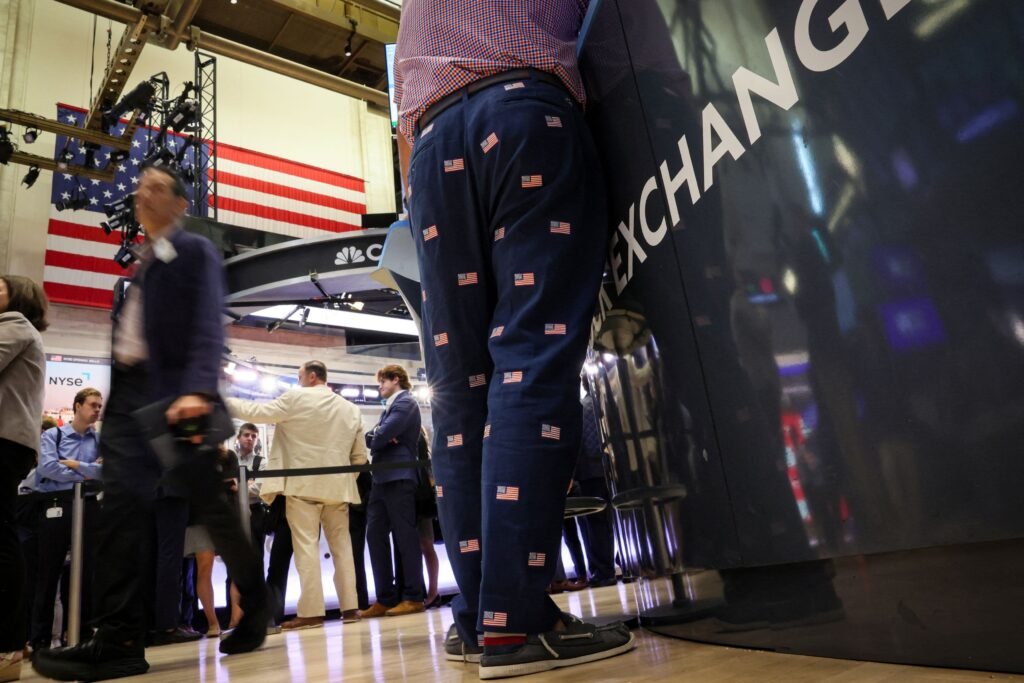Despite many experts urging diversification away from the US, Wall Street has been the top destination for traders and investors for several years in a row.
The S&P 500 is expected to rise nearly 18% in 2024, while the Nasdaq Composite Index is expected to rise 22% over the same period.
Other major markets aren’t even close.
Japan has been one exception after three decades of significant stagnation, with the Nikkei stock average up 23% so far in 2024.
There were also sizeable gains in Argentina and Turkey, but both countries are struggling with soaring inflation and currency instability, making them less attractive investments than their year-to-date returns would suggest.
And then there’s China, where the Shanghai Composite Index has fallen this year despite some bullish predictions from international strategists.
But bulls are still stuck with a China market that is beset by a host of economic problems, from a struggling real estate market to sluggish domestic consumption to political and economic policies that are causing China’s trading partners to impose tariffs on exports.
It is true that China leads the way in making electric cars and solar panels, and that exports are growing despite tariffs on Chinese products.
But President Xi Jinping’s “party over prosperity” political model continues to dampen enthusiasm among both foreign investors and domestic consumers.
Of course, the United States has its problems.
This is an unprecedented US presidential election in too many ways to mention in any trading or investing commentary.
But our economy is not only strong, it is the envy of the world.
The US economy is slowing, unemployment is rising, and inflation continues to decline – all factors that lead to lower interest rates.
Lower interest rates could prolong the stock market rally and spur an economic recovery.
All that could change depending on the policies of the next presidential administration and the makeup of Congress in 2025.
However, until Election Day on November 5th, it will be completely unclear what will happen in the future of the United States.
It is also true that our nation’s budget deficit and debt are unsustainably large.
But bond market investors, knowing that countries such as China, Japan, Italy and Spain have bigger fiscal problems than the United States, are not shrugging off just yet.
According to the China Finance Agency, China’s total debt-to-GDP ratio is estimated to be 288% in 2023. This compares with the United States’ ratio of 123% in 2023. Japan’s debt-to-GDP ratio will be 255% in 2024, according to the International Monetary Fund.
Foreign investors continue to buy U.S. Treasury bonds as a result of this differential, in addition to the favorable yields they offer and the potential for capital gains if interest rates fall significantly. In fact, if interest rates fall, bond prices will rise, creating opportunities for capital gains.
In addition to this, the US dollar has remained stable despite concerns that it may lose its position as the world currency.
So far, every concern about America’s place in the world, whether from abroad or from some at home, has resulted in losses for investors who have heeded the calls of impending doom.
Financial markets are in no way suggesting that America is in decline. Quite the opposite.
There may come a day when that turns out to be true and other economies and markets prove more attractive, but that day has not yet come.
For those who continue to urge U.S. investors to diversify across global markets, developed and emerging, it is well to remember the immortal words of Kansas’ Dorothy Gale: “There’s no place like home.”
— CNBC contributor Ron Insana iFi.AI, an artificial intelligence fintech company.

